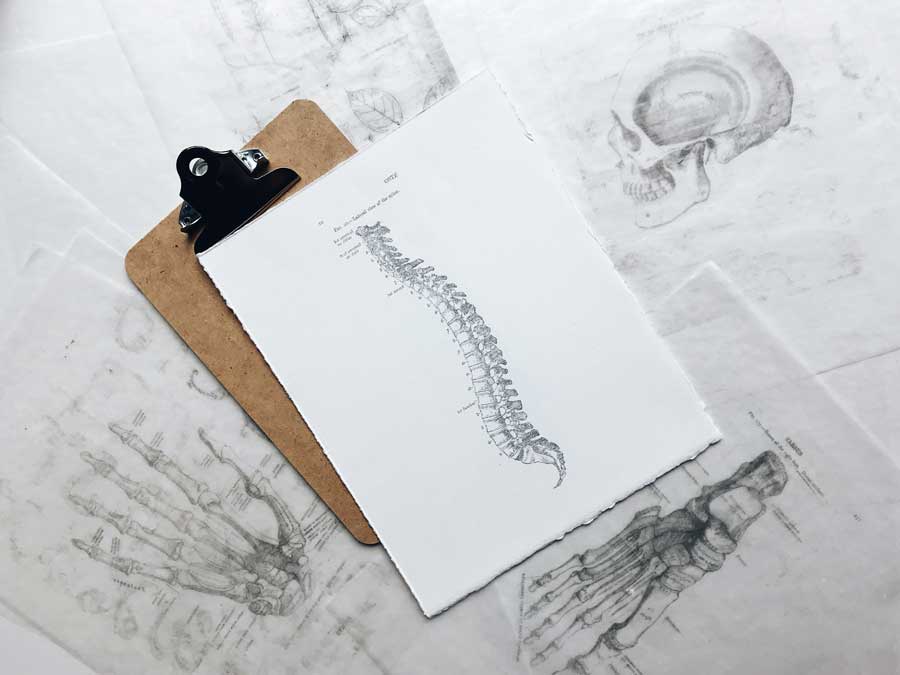What Is a Normal Spine?
What is a normal spine? Do you have an ideal spine? A “normal” spine is relative to each person’s situation (depending on the damage that has already been done, anatomical variations, and so forth), but for the purpose of this, we will consider what an ideal or optimum spine should be. There is a saying that goes “if our spine was visible, we would take better care of it,” just like we do with our teeth. Most people brush their teeth every day, but not everyone thinks about spinal hygiene every day. Since our spine houses the extension of our brain, it must be important right?
Looking at your spine from the side, it should have 3 curves in it.2,3 The importance of the curves is to increase shock absorbing capacity, increase flexibility, maintaining stability in your spine,3 and to help resist gravitational forces that constantly pull down on us throughout the day. The most important curve out of the 3 curves is the curvature in your neck because the nerves that continue out of your brainstem have to travel through your spinal canal in your neck before the nerve signals can reach other parts of your body. When you have a loss of curve of your spine in this plane, it takes the pressure off the back part (facets) of your spine and puts more pressure on your discs, causing them to wear out faster and making them more prone to injury in the future.
What Does a Normal Cervical Spine Look Like?

An ideal cervical spine should have a curve in it because it is its strongest in this position. As the spine loses its curve it becomes weaker and more prone to injury. Gray’s Anatomy shows that the greatest pivotal stress is in the upper neck region, as well as the lower neck region, allowing for the greatest strength and stability to be achieved in the neck when there is a lordotic curve (banana shape) present in the neck.4
The top bone (atlas) should have an angle between 18-24 degrees. In this position, it causes the least amount of pressure on the brain stem. Having these curves in your spine decreases the tension on your spinal cord. If you were to take out the curves in your spine, it would lengthen your spinal cord up to 7cm.5 When you lose the curves in your spine it elongates, stretching out your spinal cord and can cause a variety of neurological problems. Unfortunately, the brain and spinal cord are not forgiving, so if you get any damage to these areas, they are likely to be permanent. This is why it is important to get your spine evaluated periodically to make sure you correct any problems and to keep it healthy. People with poor cervical curves suffer from headaches, neck and shoulder pain, jaw pain, and fatigue because it takes more energy throughout the day to hold one’s head up.
Looking at your spine from the front it should be straight up and down when looking at it from the front3. Your head (eyes and ears) should be level, as well as your hip bones. This position uses the least amount of energy to support your body everyday gravity pulls on it. When you get curves in this plane, it is referred to as scoliosis.



This uneven pressure on the spine can cause it to wear down and degenerate faster, leading to health problems in the future, just like if the tires on your car were not aligned properly.



Your pelvis is the foundation of your spine. Just like in your house, when the foundation is off, it can throw the rest of it off. An ideal spine should have even hips, a sacrum (tailbone) that is straight up and down, and a lumbar spine (low back) that sits straight up on top of it.
Have You Ever Seen Your Spine?
Most people haven’t, so they don’t know if they have a problem or not. The best way to know the condition of your spine is with a X-ray. This will give you the most information about the condition of your spine, alignment, any anatomical variations, and any contraindications for chiropractic care. At Spineology Chiropractic, we try to deliver the highest quality care in Newton, Massachusetts. Spinal alignment is great for our overall health and it is our mission to improve people’s quality of life through specific, corrective chiropractic care.
References
- Harrison D, Betz J, Ferrantelli J. Sagittal Spinal Curves and Health. J Vertebral Subluxation Res 2009; July: 1-8.
- Harrison et al. A Normal Spinal Position: It’s Time to Accept the Evidence. Journal of Manipulative and Physiological Therapeutics 2000; 23: 9: 627-630.
- White A. Panjabi M. Clinical biomechanics of the spine. Philadelphia: J B Lippincott. P. 2
- Gray, Henry MD, Gray’s Anatomy.
- Breig A. Adverse mechanical tension in the central nervous system: analysis of cause and effect– relief by functional neurosurgery. New York (NY): John Wiley and Sons; 1978.
- Ella Been, Sara Shefi, Michalle Soudack. Cervical lordosis, the effect of age and gender. The Spine J. 2017:1-33

